#an táin bó cuailnge
Explore tagged Tumblr posts
Text

Studying the greatest epic in Irish mythology
#an táin bó cuailnge#it translates as the cattle raid of cooley#we've always been obsessed with cows
2 notes
·
View notes
Text

Cú Chulainn in Battle ; J. C. Leyendecker
#J. C. Leyendecker#Joseph Christian Leyendecker#Cú Chulainn#Táin Bó Cuailnge#The Ulster Cycle#Irish Mythology#Art#Painting
7 notes
·
View notes
Text
Is Cú Chulainn the only Irish boy to ignore his mother and survive?
#idea for my postdoc lol#the wrath of the irish mammy#Poor Dechtine#the táin#táin bó cuailnge#táin thoughts#phd thoughts
1 note
·
View note
Text
Versions of Táin Bó Cúailnge (and related tales) that I own now:
The Stowe Version of Táin Bó Cúailnge, edited by Cecile O'Rahilly
Táin Bó Cúalnge from the Book of Leinster, edited and translated by Cecile O'Rahilly
Táin Bó Cuailnge: Recension 1, edited and translated by Cecile O'Rahilly
The Táin, translated into English by Thomas Kinsella
The Táin, translated into English by Ciarán Carson
Táin Bó Cúailnge, modern Irish version by Darach Ó Scólaí
An Táin, modern Irish version by Eoghan Ó Loinsigh
An Táin, modern Irish graphic novel version by Colmán Ó Raghallaigh and Cartoon Saloon
Laoch na Laochra: Scéal Chúchulainn, modern Irish retelling by Réamonn Ó Ciaráin
Cuchulain of Muirthemne, English retelling by Lady Gregory
The Hound of Ulster, English retelling/novelisation for children by Rosemary Sutcliff
On Raven's Wing, English retelling/novelisation by Morgan Llewelyn
#tain bo cuailnge#ulster cycle#i can't wait until i can add TRWTH to this list#medieval irish#this is a normal number of versions of this text or derivatives thereof to own
39 notes
·
View notes
Text
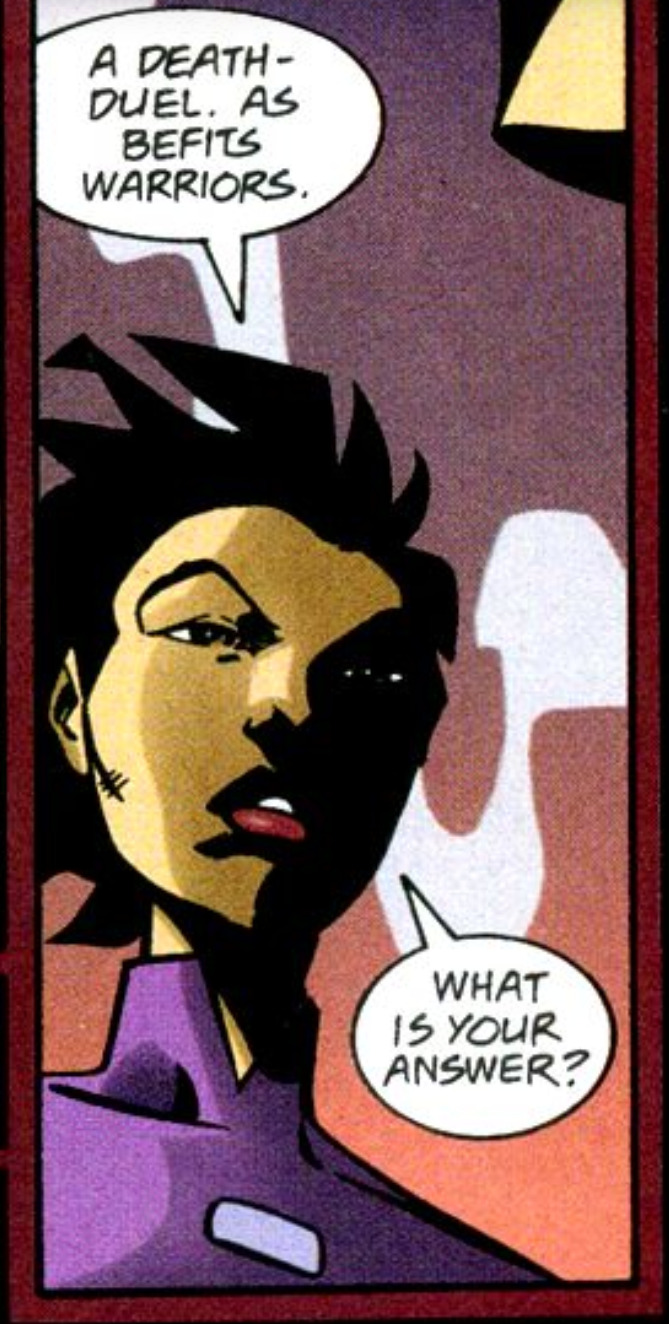
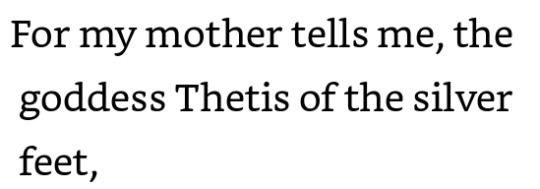


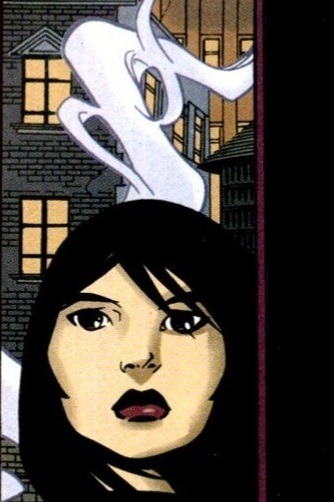
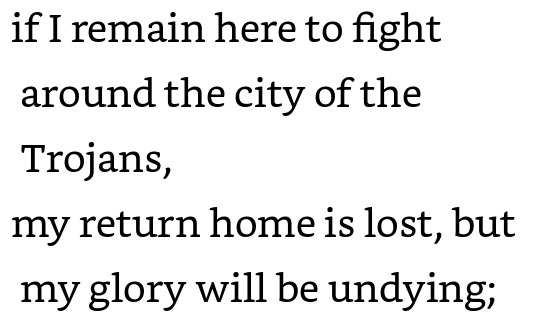


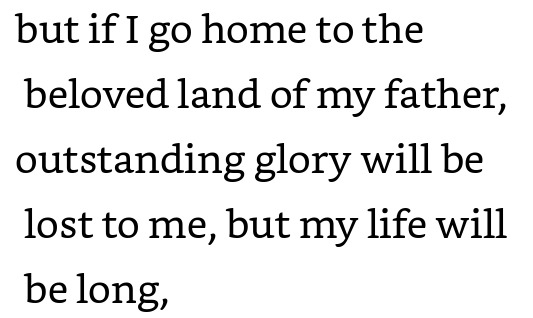
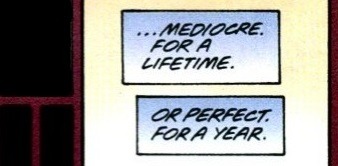



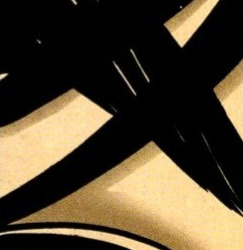
Batgirl #9 (2000) // the Iliad trans. Caroline Alexander // Táin Bó Cuailnge trans. Thomas Kinsella
#cassandra cain#dc#batgirl#batman#web weaving#I've wanted to make this post for years now#when I first read this scene in the comic I almost screamed!! the choice between a short life and glory or a long life and mediocrity. just#AHHHHHHHHH#anyway DC should do more with this Cassandra Cain is SUCH an interesting character with#the way she shares characteristics with classic heroes of myth and legend#I mean all superheroes do to a certain extent#but they're usually not this overt#may never do this again lol I have zero programs for this and it took forever#but also the more I focused on it the more parallels I found#Achilles and his mother#Cass and Lady Shiva#heck even to some extent Cúchulainn and Cathbad#who may or may not be his grandfather#if Cass chooses to get Shiva's help she'll have to come back in a year to fight to the death (and she expects to die)#if Achilles chooses to fight the Trojans he'll die during the war#if Cúchulainn picks up those weapons (choosing to fight for glory) his life will be short#if Cass chooses to do things Bruce's way (choosing her father) she'll can be Batgirl again#but never with the same skill level#if Achilles chooses to return to his father's land he will never achieve fame and glory but he'll live a long life#you can't really see it in these snippets but Cúchulainn's already made the choice and it can't be taken back#but you could parallel it with Conchobar's anger or with Cathbad's prediction of woe coming to that child#they're his mother's family but they are the paternal figures here#and in the end all three choose perfection and glory and fame over a long life of mediocrity#ANYWAY I find it fascinating#dc once again please hire me
80 notes
·
View notes
Text
youtube
The Tain is an EP by The Decemberists released in 2004 by Acuarela Discos and in 2005 by Kill Rock Stars. The single 18-plus minute track, in five parts, is named after the Irish mythological epic Táin Bó Cúailnge, often simply called The Táin.
The Táin or less commonly as The Cattle Raid of Cooley, is an epic from Irish mythology. It is often called "the Irish Iliad", although like most other early Irish literature, the Táin is written in prosimetrum, i.e. prose with periodic additions of verse composed by the characters. The Táin tells of a war against Ulster by Queen Medb of Connacht and her husband King Ailill, who intend to steal the stud bull Donn Cuailnge.
Video directed by Andy Smetanka
Lyrics:
[part 1]
[Crone]
Here upon this pillow
Made of reed and willow
You're a fickle little twister
Are you sweet on your sister?
Your fallow won't leave you alone
And granted for their pleasure
Possessions laid to measure
She's a salty little pisser
With your cock in her kisser
But now she's a will of her own
[PART II]
[Husband]
Damn your ankles and eyes wide
From you fingernails to your ponytails too
King of the insects and the m-5
Over Charlemagne in a motorcade too
And baby needs a new prize
Baby needs a new and shiny prize
[Captain]
In this place called heavenly
You were born here
This place called heavenly
You were born here
You were born here
[Husband]
And now all the marchers descend from high
I will dedicate all of my awakenings to this
And damn all the angles that oppress my sight
I will bleed your heart through a samovar soon
Baby needs a new prize
Baby needs a new and shiny prize
[Captain]
In this place called heavenly
You were born here
This place called heavenly
You were born here
You were born here
You were born here
[PART III]
[Soldier]
They settled dust in your hair
To watch you shake and shout it out
With our armaments bared
We shed our bags and travel-alls
From the lee of the wall
He comes in the chang and chariot
And all his eunuchs in thrall
Can scarce lift his line and lariat
Here come loose the hounds
To blow me down
[Chorus Of Waifs]
Blow me down
[Soldier]
On this stretch of ground
I'll lay me down
[Chorus Of Waifs]
Lay me down
[Soldier]
To sleep
[Chaplain]
And now stricken with pangs
That tear at our backs like thistle down
The mirror's soft silver tain
Reflects our last and birthing hour
[Soldier]
Here come loose the hounds
To blow me down
[Chorus Of Waifs]
Blow me down
[Soldier]
On this stretch of ground
I'll lay me down
[Chorus Of Waifs]
Lay me down
[Soldier]
Here come loose the hounds
To blow me down
[Chorus Of Waifs]
Blow me down
[Soldier]
On this stretch of ground
I'll lay me down
[Chorus Of Waifs]
Lay me down
[Soldier]
To sleep
[PART IV]
[Widow]
O the wind is blowing, it hurts your skin
As you climb up hillside, forest and fen
Your arms full of lullabies, orchids and wine
Your memories wrapped within paper and twine
The room that you lie in is dusty and hard
Sleeping soft babies on piles of yards
Of gingham, taffeta, cotton and silk
Your dry hungry mouths cry for your mother's milk
When the dawn comes to greet you, you'll rise with clothes on
And advance with the others, singing old songs
Of cattle and maidens and withered old queens
Let the music carry you on
The room that you lie in is dusty and hard
Sleeping soft babies on piles of yards
Of gingham, taffeta, cotton and silk
Your dry hungry mouths cry for your mother's milk
[PART V]
[Woman]
Darling dear what have you done?
Your clothes are torn, your make-up runs
[Daughter]
I ran through brambles, blooming thistle
I washed my face in the river when you whistled me on
[Woman]
Darling dear, what have you done?
Your hands and face are smeared with blood
[Daughter]
The chaplain came and called me out
To beat and to butcher his mother's sow
[Woman]
But darling dear, they found him dead
This morning on the riverbed
But hush now darling, don't you cry
Your reward's in the sweet by-and-by
Hush now baby, don't you cry
Your reward's in the sweet by-and-by
[Crone]
And now we've seen your powers
Softly stretch the hours
You're a fickle little twister
Are you sweet on your sister?
As now you go wandering home
#Youtube#the tain#the decemberists#Colin melody#music#irish mythology#Táin Bó Cúailnge#The Cattle Raid of Cooley#Queen Medb#Cúchulainn#Wycinanki#Wayang#prog rock#indie rock#folk rock#Andy smetanka
9 notes
·
View notes
Text

The Táin rebound as a hardback book
The Táin Bó Cuailgne (TBC) is an 8th Century Old Irish story. It is considered the closest thing in early Irish literature to a "national epic". It's central to the Ulster Cycle body of stories. The story centres on a war between the kingdoms of Connacht and Ulster over the Donn Cuailgne, a bull which seems to have magical or supernatural significance.
My old paperback copy was getting pretty worn from being read over and over! I decided to make a new hardback binding for it. Paperback books will never have the same lifespan as hardbacks unfortunately, but this should make the book last longer too. This edition is the famous Thomas Kinsella translation of 1969. I decided that it should be bound in red, white and black, as these appear several times in the text. This is most notable in the story of the Sons of Uisliu:
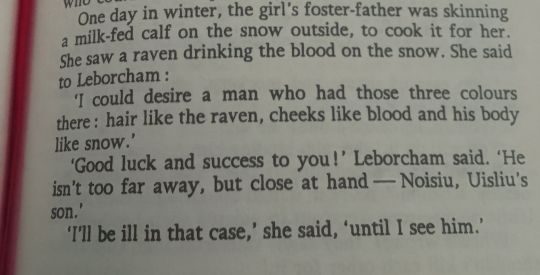
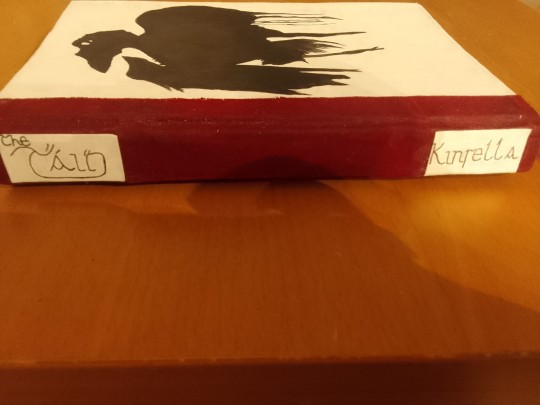
I copied the image on the cover from the original arrwork by Louis LeBrocquy. It depicts the Morrigan in crow form. She is a war goddess who manipulates other characters to her own ends throughout the story.

The title design on the spine is a bit abstract; the T and N are supposed to resemble bulls. This reflects one of the last episodes in the story, in which the Donn Cuailnge fights his Connacht counterpart, Findbennach.

The back cover contains a quote from the prophet Fedelm. She prophesies the outcome of the war to the Connacht queen Medb; needless to say, her prediction of disaster comes true. The quote is in both the original Old Irish and in English translation.

I also made homemade headbands and a ribbon bookmark.
20 notes
·
View notes
Text
The Blessings of the Táin
The Táin Bó Cuailnge, often simply called the Táin, is one of the most important Irish myths, and perhaps even one of the most important in Europe, with some claiming that it’s the earliest surviving epic in Western vernacular literature. You can listen to this episode as a podcast here. The Táin 9 week course begins on Sunday, 14th of January.

View On WordPress
1 note
·
View note
Text
The first warp-spasm seized Cúchulainn, and made him into a monstrous thing, hideous and shapeless, unheard of. His shanks and his joints, every knuckle and angle and organ from head to foot, shook like a tree in the flood or a reed in the stream. His body made a furious twist inside his skin, so that his feet and shins and knees switched to the rear and his heels and calves switched to the front. The balled sinews of his calves switched to the front of his shins, each big knot the size of a warrior’s bunched fist. On his head the temple-sinews stretched to the nape of his neck, each mighty, immense, measureless knob as big as the head of a month-old child. His face and features became a red bowl: he sucked one eye so deep into his head that a wild crane couldn’t probe it onto his cheek out of the depths of his skull; the other eye fell out along his cheek. His mouth weirdly distorted: his cheek peeled back from his jaws until the gullet appeared, his lungs and liver flapped in his mouth and throat, his lower jaw struck the upper a lion-killing blow, and fiery flakes large as a ram’s fleece reached his mouth from his throat.
#good night internet#also Táin Bó Cuailnge (Anonymous)#that time cu chulainn hulked out in biologically realistic fashion
1 note
·
View note
Text
"Do you not remember when you were fighting the harsh and grizzled Germán Garblas above the borders of the Tyrrhene Sea, and you left your sword with the enemy army? It was Cúchulainn who killed a hundred warriors to reach it and bring it back to you."
WELL NOW I'M HAVING FEELINGS ABOUT FERDIA AND CÚCHULAINN AGAIN. THANKS, FERDIA'S CHARIOTEER
#the táin#táin bó cuailgne#the tain#old irish#ferdia/cuchulainn#fer diad/cu chulainn#tain bo cuailnge#trwth
11 notes
·
View notes
Text
*bleeding out on the floor* I'm going to get through the rest of Táin Bó Cuailnge if it kills me
11 notes
·
View notes
Text
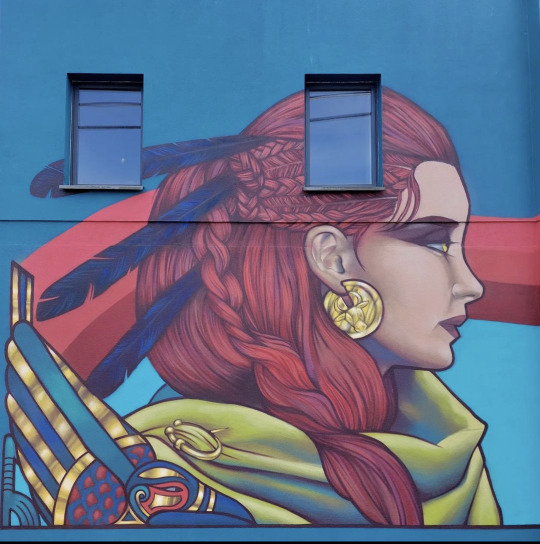


Credit: https://instagram.com/thisisfriz
From the artist's IG post:
"I was so happy when the good folk at the DRAWDA festival approached me with this brief. The Mórrígan, one almighty Goddess of War from Irish Mythology.
My depiction of her stems from her appearance in one of Ireland's most famous epic tales, An Táin Bó Cuailnge. When her amorous advances to the hero Cúchulainn are rebuffed she makes it her mission to become a thorn in his side. In this story she appears as a beautiful woman, a hag, an eel, a cow and a crow. In my mural depict her as the beautiful woman mirrored by her wolf self. Framed by an eel and crow that designed inspired by my recent trip to Trinity College to finally see the Book of Kells for reals."
#anmórrígan#anmorrigan#an morrigan#an Mórrígan#namorrígna#namórrígna#namorrigna#mural#thisisfriz#friz#irish artist#irish panganism#please note An Mórrígan is not a scorned Goddess though
25 notes
·
View notes
Note
I am extremely interested in the Morrighan but as I'm sure you're aware it is incredibly difficult to get much information on her. Do you have any sources I could explore or tips on how to tell what is bs?
My best recommendation, frankly, is to start with the myths. The Cattle Raid of Cooley (Táin Bó Cuailnge), The Cattle Raid of Regamna (Táin Bó Regamna), and The Second Battle of Moytura (Cath Maige Tuired) in particular are good places to start. The Morrigan plays a critical role in all three of them. Getting a foundation in what the myths do say about the Morrigan means that you can also understand what the myths don't say, which is critical for spotting misinformation.
For more analytical sources, the Story Archaeology Podcast (which is just generally excellent) has two episodes exclusively looking at the Morrigan and her mythic appearances, and Celticist John Carey has an article called Notes on the Irish War-Goddess that goes into the various Morrigans, if you're able to find it anywhere (and if you do, let me know - I've been trying to track down a copy!).
If you're approaching things from a polytheist standpoint, I've heard good things about the Coru Cathubodua Priesthood, although I haven't had any direct experience with them myself. They do, however, have an excellent reading list.
Ultimately, the Morrigan is one of the most complicated figures in Irish myth, so there's a lot of uncertainty and a lot of conflicting theories. I'd be very wary of any sources that aren't upfront about that.
Good luck!
53 notes
·
View notes
Text
In other versions of the legend, the spear had seven heads, each with seven barbs. In the Táin Bó Cuailnge, Cúchulainn received the spear after training with the great warrior mistress Scáthach in Alba. She taught him and his foster-brother, Ferdiad, everything the same, except she taught the Gáe Bulg feat only to Cuchulainn. He later used it in single combat against Ferdiad. They were fighting in a ford, and Ferdiad had the upper hand; Cúchulainn's charioteer, Láeg, floated the Gáe Bulg down the stream to his master, who cast it into Ferdiad's body, piercing the warrior's armor and "coursing through the highways and byways of his body so that every single joint filled with barbs." Ferdiad died soon after. On a separate occasion, Cúchulainn also killed his own son, Connla, with the spear. In both instances, it was used as a last resort, as once thrown it proved invariably fatal. Cúchulainn's use of the Gáe Bulg in the Táin Bó Cuailnge exemplifies its deadliness and the gruesome condition in which it leaves its victims. This can be seen in the fact that after it is used, one must literally cut into the victim to retrieve it.
I read about this as a kid and i havent forgotten since
Ideas and concepts thay changed my mind forever
4 notes
·
View notes
Text

The Táin bó Cuailnge (n.d.)
#tain bo cuailnge#The funniest part is that Cú pulls the fake-beard bit not just once but twice on completely unrelated counts.
8 notes
·
View notes
Note
Discourse regarding the Táin bó Cuailnge-- Queen Medb was within her rights to take the cow, but should have just asked to borrow it for a bit instead of stealing it.
(I know i said that last one was the last Táin post, but i lied)
I mean, Medb did ask, and not just to borrow it, but to rent it. She told Daire that she'd not only return it, but pay him back in more cattle, extremely fertile land, and her "friendship" which of course means [redacted]. My guess is as the cow in question is actually a prized stud bull with magical properties, she intended to breed a ton of magical cattle to make up for the property she would have given in return. It's pretty hard to argue that someone's wealth is greater than yours when your livestock is unbeatable (and since her husband's bull used to be hers it would mean both had at one point been in her posession).
Daire felt insulted that a queen would be able and willing to take from him and said no, despite all he'd be given for it if he said okay. Medb's response was "well i'm now honorbound to kick you ass and also your king has already wronged me so i want him dead too."
And even if she had no intention on paying him back, that seems to be a suspiciously generous payment entirely to rent an animal, and there people of Ulster who probably felt uncomfortable giving the bull to Connacht for any period of time (Medb herself points this out and tries to accomodate it) given the bad blood between the kingdoms. So either Daire unfairly trusted drunk messengers more than the queen who sent them and didn't accept the offer out of his own pride or his greed and lust took precedant over his critical thinking and willingness to think outside of himself and allowed him to be duped in the first place. I haven't read enough about Medb outside of the Táin enough to say which is a more correct reading of the situation, but either way it looks to me like Daire made a fool of himself and let it be all of Ulster's problem.
18 notes
·
View notes